Black hillsStratigraphy
Steven Dutch, Professor Emeritus, Natural and Applied Sciences, Universityof Wisconsin - Green Bay
| Era | Formation | Picture | Notes | ||
| Tertiary | Medicine Root Gravels | 0-2 m | |||
| Sharps | 30 m |
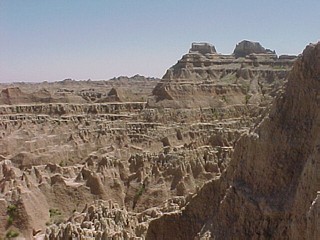 |
Forms the tips of the highest Badlands pinnacles | ||
| Rockyford Ash | 2-4 m | A thin ledge-forming unit just below the tops of the pinnacles. | |||
| Brule | 100 m | Makes up most of the Badlands cliffs. Often banded white and pink. | |||
| Chadron | 15-20 m |
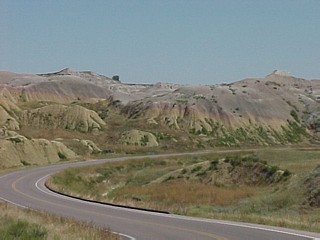 |
From top to bottom: gray Chadron Formation, red Interior
Paleosol, yellow Yellow Mounds Paleosol, and yellow-gray Fox hillsFormation. The paleosols are not really a formation, but truncate a number of formations. |
||
| Interior Paleosol | 1-2 m | ||||
| Chamberlain Pass | 0-4 m | ||||
| Yellow Mounds Paleosol | 2-5 m | ||||
| Upper Cretaceous | Fox hills | 6-60 m | |||
| Pierre Shale | 200 m + |
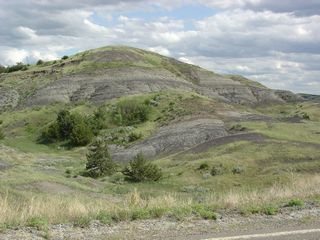 |
God must have been in a gray mood when he made this stuff and covered half of South Dakota with it. | ||
| Upper Cretaceous | Niobrara Formation | 80 m | |||
| Upper Cretaceous | Carlile Shale | 150 m | |||
| Upper Cretaceous | Greenhorn Formation | Upper Limestone | 20 m | ||
| Lower Shale | 60-80 m | ||||
| Upper Cretaceous | Belle Fourche Shale | 100 m | |||
| Lower Cretaceous | Mowry Shale | 40 m | |||
| Lower Cretaceous | Newcastle Sandstone | 10 m |
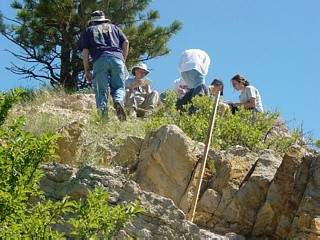 |
||
| Lower Cretaceous | Skull Creek Shale | 60-80 m |
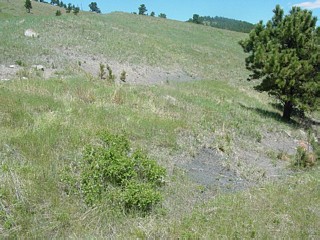 |
Dull gray shale with gypsum. Not the white nodular masses of the Spearfish but transparent blades, best seen by sun glint. | |
| Lower Cretaceous | Fall River Formation | 40 m |
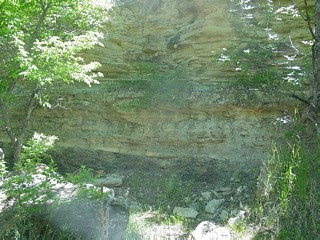 |
That's lignite at the bottom. | |
| Lower Cretaceous | Lakota Formation | 70-110 m | |||
| Upper Jurassic | Morrison Formation | 0-30 m | The Western Interior Jurassic formation. | ||
| Upper Jurassic | Unkpapa Sandstone | 15-40 m |
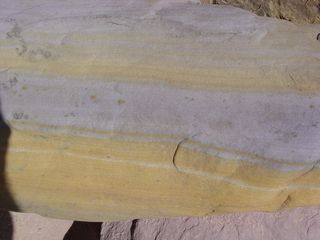 |
Not typical Unkpapa but striking. This purple and yellow striped facies is found in a small area not publicly accessible. | |
| Upper Jurassic | Sundance Formation | 25 m |
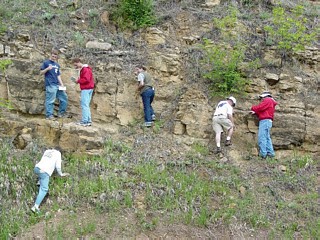 |
Consists of a variety of sandstone and limestone members. | |
| Unconformity | |||||
| Permian | Spearfish Formation |
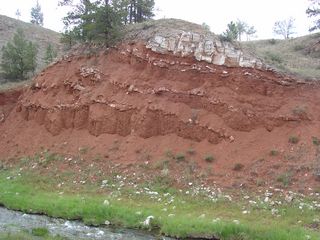 |
The Spearfish and Opeche Formations are all but indistinguishable, except that the Spearfish has abundant gypsum. | ||
| Permian | Minnekahta Limestone |
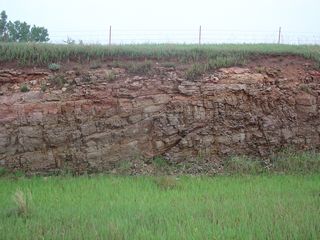 |
Pink, fine-bedded | ||
| Permian | Opeche Formation |
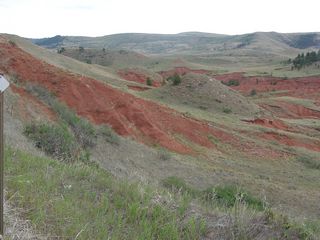 |
The Opeche can be told from the very similar Spearfish Formation by its lack of gypsum. | ||
| Pennsylvanian-Permian | Minnelusa Formation |
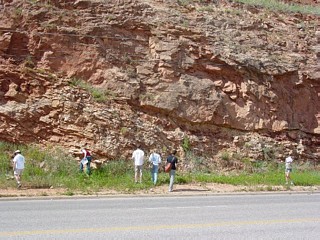 |
Gray but stained orange by the overlying formations. | ||
| Unconformity | |||||
| Lower Mississippian | Pahasapa Limestone |
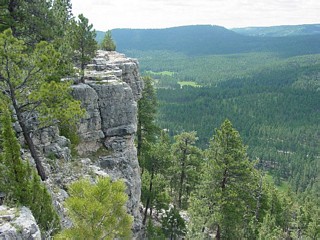 |
This is the cave-forming unit in the Black hills. Called Madison Limestone elsewhere and in older literature. | ||
| Upper Devonian - Lower Mississippian | Englewood Limestone |
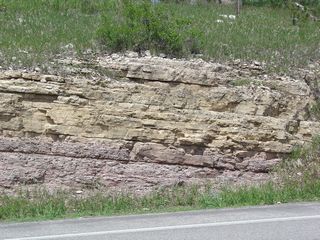 |
This photo nicely shows the two-toned nature of the Englewood: pink below, buff above. | ||
| Unconformity | |||||
| Cambrian | Deadwood Formation |
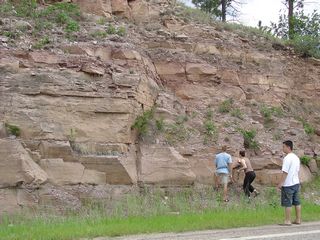 |
Various shades of red but has glauconitic members near the base in places. | ||
| Unconformity |
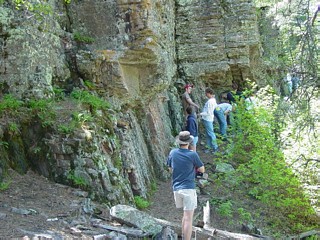 |
Here 500 m.y. Deadwood Sandstone rests on 1.7 b.y. old schist. One quarter of the age of the earth is missing here. | |||
Return to Historic Sites Index
Return to Virtual FieldTrips Index
Return to Professor Dutch's Home Page
Created 7 April 2003, Last Update 06 June 2020